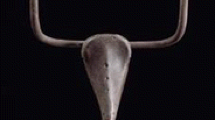Summary
It is hypothesized that the presence of a golden section does not in and of itself add to the aesthetic attractivity of a pattern. Only as far as the realization of a golden section entails equivalences between parts of a pattern, will the aesthetic appeal of a pattern be enhanced. An experiment is reported in which this hypothesis is tested and confirmed.
Similar content being viewed by others
References
Barlow H, Reeves B (1979) The versatility and absolute efficiency of detecting mirror symmetry in random dot displays. Vis Res 19:783–793
Benjafield J (1976) The ‘golden rectangle’: Some new data. Am J Psychol 89:737–743
Berlyne D (1971) Aesthetics and Psychobiology. Appleton-Century-Crofts, New York
Borissavliévitch M (1958) Golden Number. Tiranti, London
Bruce VG, Morgan MJ (1975) Violations of symmetry and repetition in visual patterns. Perception 4:239–249
Corballis MC, Roldan CE (1975) Detection of symmetry as a function of angular orientation. J Exp Psychol: Human percpt perform 1:221–230
Fechner G (1876) Vorschule der Ästhetik. Breitkopf und Härtel, Leipzig
Fensom DS (1981) The golden section and human evolution. Leonardo 14:232–233
Fischler R (1981) On the application of the golden ratio in the visual arts. Leonardo 14:31–32
Frith CD (1976) The detection of structure in visual displays. Acta Psychol 40:115–125
Godkewitsch M (1974) The golden section: an artifact of stimulus range and measure of preference. Am J Psychol 87:269–277
Hintz JM, Nelson TM (1970) Golden section: reassessment of the perimetric hypothesis. Am J Psychol 83:126–129
Hochberg J (1978) Art and perception. In: Carterette EC, Friedman MP (Eds), Handbook of perception, Volume X, Academic Press, New York
Huntley HE (1970) The divine proportion. A study in mathematical beauty. Dover, New York
Julesz B (1971) Foundations of cyclopean perception. University of Chicago Press, Chicago
Leeuwenberg E (1971) A perceptual coding language for visual and auditory patterns. Am J Psychol 84:307–349
McManus IC (1980) The aesthetics of simple figures. Br J Psychol 71:505–524
Piaget J (1961) Les mécanismes perceptifs. PUF, Paris
Plug C (1980) The golden section hypothesis. Am J Psychol 93:467–487
Restle F (1982) Coding theory as an integration of Gestalt psychology and information processing theory. In: Beck J (Ed) Organization and representation in perception. Erlbaum, Hillsdale, NJ
Stone LA, Collins LG (1965) The golden section revisited. Am J Psychol 78:503–506
Szilagyi PG, Baird JC (1977) A quantitative approach to the study of visual symmetry. Percept & Psychophysics 22:287–292
Author information
Authors and Affiliations
Rights and permissions
About this article
Cite this article
Boselie, F. The aesthetic attractivity of the golden section. Psychol. Res 45, 367–375 (1984). https://doi.org/10.1007/BF00309712
Received:
Issue Date:
DOI: https://doi.org/10.1007/BF00309712



